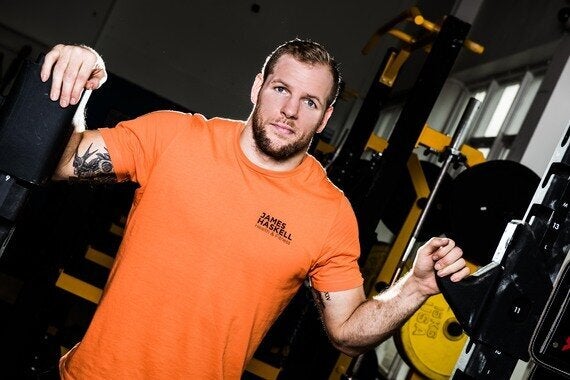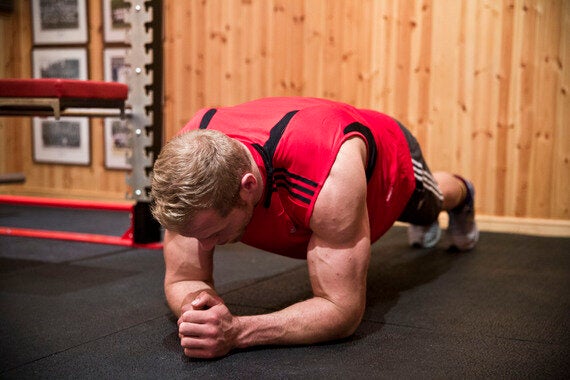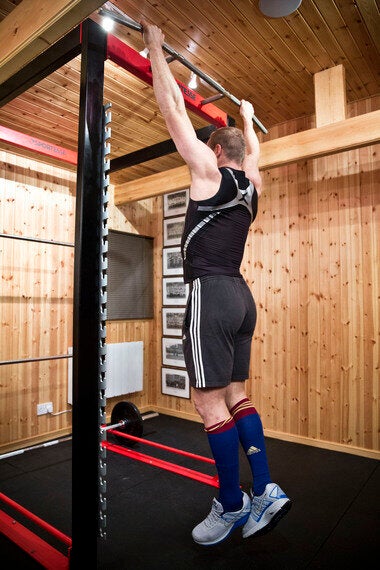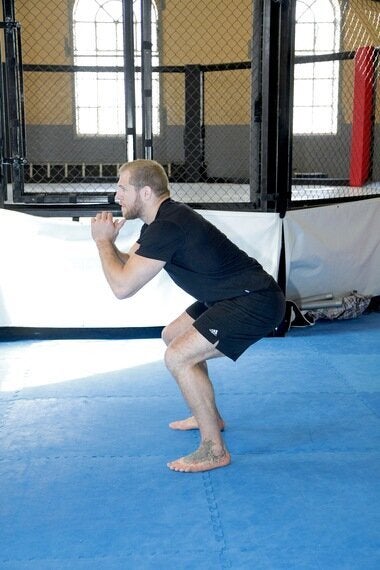It's been a productive and highly enjoyable last few weeks away Down Under. Thank you for all your support and encouragement...
Our game plan and structure has been very much based around aggression and power , which brings me neatly to my topic for today's article.

These days, far too many people base their levels of fitness on how much they can bench or how good they look in a pair of speedos.
Whilst these might be enough of an indicator for some, they don't cut it for any serious athlete. TRUE fitness and strength is about a multitude of factors - not just how many plates you can put on a barbell.
Do you consider yourself a strong, healthy, highly functioning athlete?
Then you should be able to pass all nine of these tests with flying colours.
If you can't, we have some work to do. Buckle up, as these will be much harder than you think.
Hold a three minute plank
It doesn't matter how many crunches you can do - if you can't hold yourself in a plank position for at least three minutes, your core strength isn't up to scratch.
To work up to a three minute plank, combine isometric core training (such as planks, prone cobras and holding the push up position) with core stability training such as the suitcase carry. To perform this movement, hold a dumbbell or kettlebell in one hand and walk. Brace your core as you do so, which will have to work hard to keep you stabilised. This increase in stability will quickly translate to increased core strength, helping you to extend your plank well beyond the three minute range.

Deadlift double bodyweight
Deadlifting is one of the ultimate tests of true, functional strength. But, it's not just about how much weight you can pick up off the ground.
Often, the people with the heaviest deadlifts in the room are also the ones carrying the most body fat. So whilst a 200KG deadlift may look impressive, it doesn't seem quite so great when you're weighing in at 130KG yourself.
A true test of relative strength is how much you can deadlift in comparison to your bodyweight. Anything else is just a vanity exercise.
A double-your-bodyweight deadlift may take years to work up to. But when you're there, we can virtually guarantee you'll be a pretty strong dude.
The best tip for improving your deadlift? Stop spending so much time deadlifting. It may seem counterproductive, but the deadlift is such a taxing exercise on the CNS it can take a long time to recover from. Hugh Cassidy famously said that only silverback gorillas can deadlift more than once per week - so add in extra accessory work with a range of swings, squats, and farmers walks.
Complete at least two minutes of the 'Sally Up' push up challenge
Ever heard of the 'Sally Up' push up challenge? There's a reason this drill is used selection for the special forces - it's brutal.
To the tune of Moby's track 'Flower', get in a push up position. When the song says 'bring Sally up' you push up, and when it says 'bring Sally down,' you drop down.
Sound simple? It's really not. If you've never done it before, the Sally Up push up challenge will have you shaking like a leaf by the time you hit the one minute mark.
Passing two minutes requires some solid strength in the chest, triceps, shoulders and core. If you're crazy strong, have a shot at completing the whole song.
Run a mile in under 6 minutes
You don't have to have the lungs of Mo Farah to run a mile. No matter what your sport or training goals, all athletes should have the aerobic capacity to comfortably complete a mile run; if you don't, your conditioning needs serious work.

A mile is short enough to allow you to really push yourself, and not too long to be creeping into the territories of punishing cardio. In order to be in the top 2% of people, men should be able to run a sub 6 mile, and women a sub 7.30. If you can hit these targets, congratulations.
Note that being in the top 2% of the population really isn't that much of an achievement. Consider that 25% of these people are obese, and a further 50% have never trained in their lives. In reality, being in the top 2% of the general population puts you in the top 10 - 20% of the trained population. If you're serious about your fitness, this is where you should be aiming to be.
Tread water for 15 minutes
Find some water, deep enough so that your feet can't touch the floor. Tread water for 15 minutes. No rest periods, no floating. You'll be surprised how much of a challenge this one is.
Treading water doesn't require the swimming ability of Michael Phelps - but it does require solid stamina and a little muscular endurance to boot. Plus, it's something that would make a genuine difference in the real world should you need it. If you were on board a sinking ship, all those bicep curls probably aren't going to be of much benefit.
Walk for two hours
Argue all you like about the pros and cons of running; no one can deny that humans were born to walk long distances. Throughout our evolution we spent all day walking - but nowadays, the furthest many of us venture on two feet it to pick up a pint of milk at the local shop.
Next time you have a free morning, take off into nature for two to three hours - and just walk. Don't stop. You should be able to cover a good 12 - 15 miles; and more importantly, you shouldn't feel tired at the end of it.
Walking is a basic human task. If you suck at it, something's going seriously wrong.
Hang from a bar for 1 minute
The simple act of hanging will test your grip, core, bicep and forearm strength. You should be able to support your bodyweight for at least one minute, pushing up to 90 seconds for an advanced trainee. If you can't, work on your grip strength by deploying deadlifts and loaded carry variations into your training.

Do 10 strict pull ups
Pull ups are the ultimate test of relative upper body pulling strength. If you can't do ten strict pull ups with a wide grip, you're either too weak or too fat. Ladies, 5 is a good number to aim for.
Fix your pull ups by training them twice per week. Use resistance bands if required to remove some of the tension as you build strength. The back can tolerate a lot of
volume, so don't be afraid to train pull ups often to progress faster.
Squat hold for 30 seconds
Drop down into a squat position. Hold for 30 seconds. This test should be one of the easiest, but if you can't do it, you need to take a look at your lower body health. Squat holds are as much about joint strength as they are muscle strength, so if you struggle, identify the areas of pain and get them fixed.

How many of these tests can you complete?
If you would like to know more about Health, Nutrition and Fitness then please visit our website:- www.jameshaskell.com where we have a host of free material, content and videos to help you.
Please send us your questions and any comments you would like to make, via our social media channels. Plus if you feel informed by what you have read, please share the information using #JHHF #JHFitness #jHTraining #JHLeanGains #JHBodyBuilding #rugbyfit
Twitter - @jameshaskellhf
Instagram @jameshaskellhf